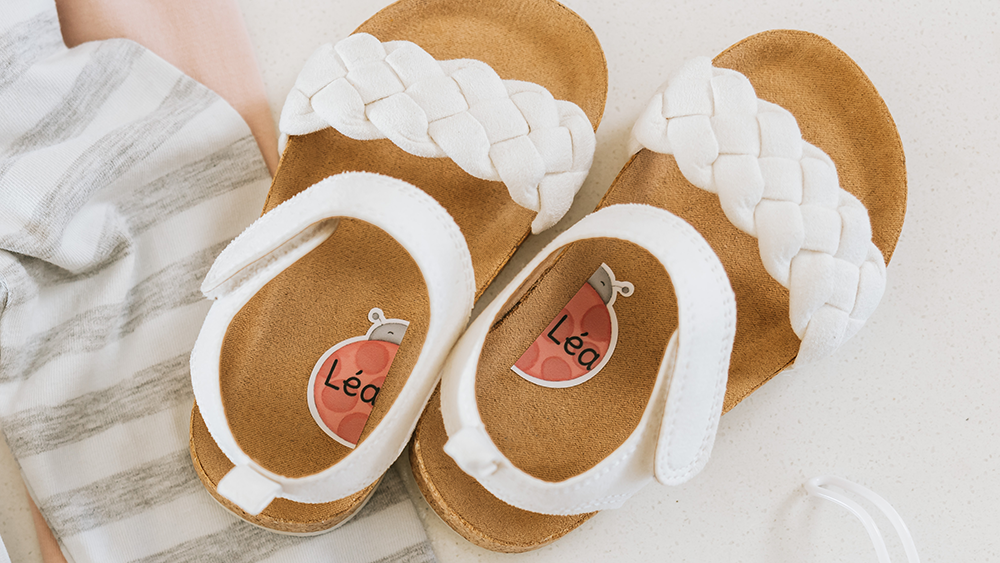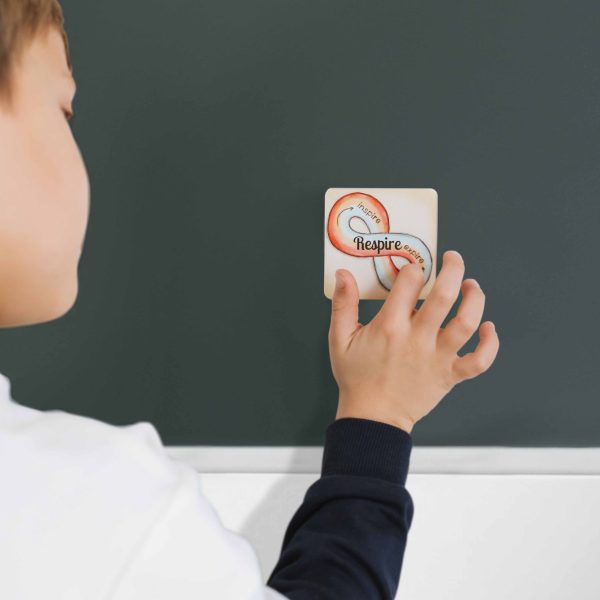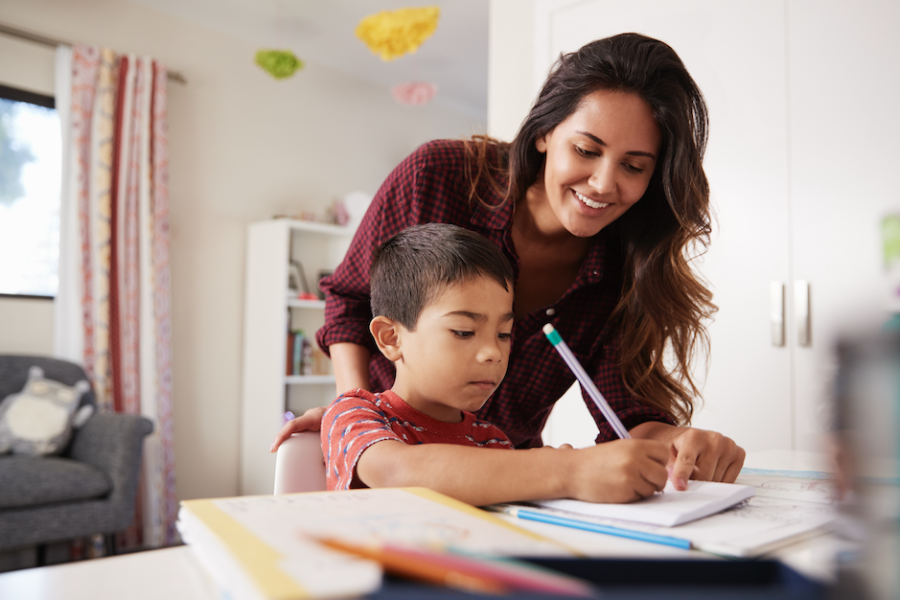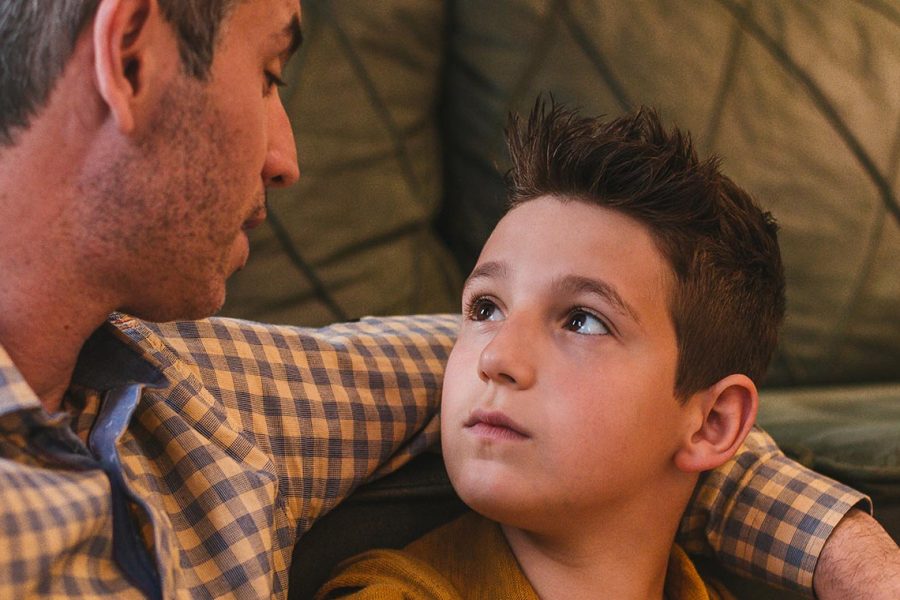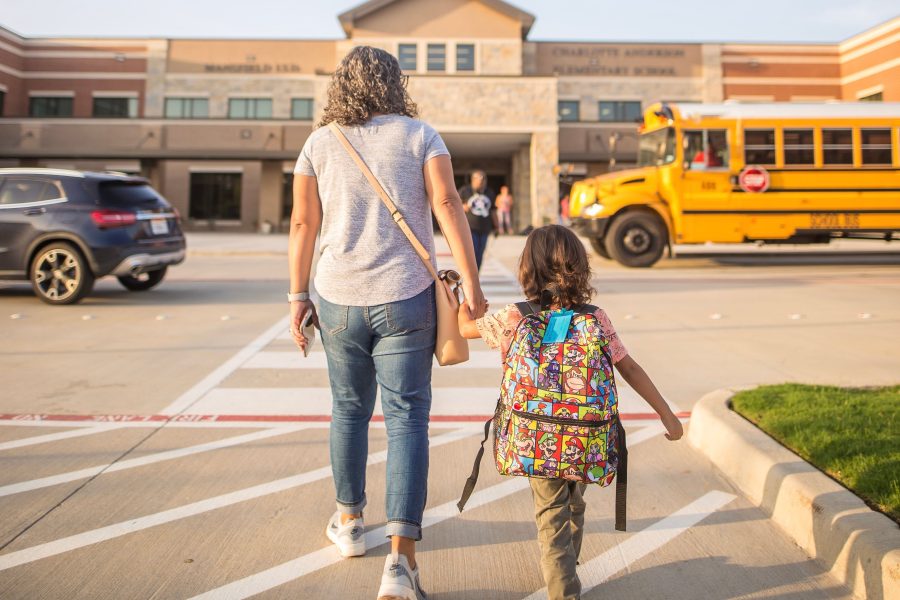As parents, one of the many questions that arise during the journey of child-rearing is when do babies needs shoes. In this guide, we delve into the multifaceted aspects of when babies might need shoes, exploring the stages of foot development, environmental factors, and practical considerations for selecting appropriate footwear. Understanding the nuances of this decision is vital for ensuring the healthy growth and mobility of our little ones.
Decoding Baby Foot Development
The Anatomy of Baby’s Feet
At birth, babies’ feet are comprised of 22 partially developed bones, primarily consisting of cartilage. Over time, these bones gradually ossify and mature, resulting in the formation of 26 fully-formed bones in the adult foot. This remarkable transformation is vital for providing stability and support as babies transition from crawling to walking. Understanding the intricacies of baby foot anatomy lays the foundation for determining the appropriate footwear and ensuring proper foot development.
Milestones in Foot Development
As babies progress through their foot development, they reach key milestones that mark significant stages in their journey towards walking independently. One crucial phase is the transition from cruising to walking, which highlights the natural progression of lower limb development.
Cruising typically begins around the age of nine to twelve months, as babies pull themselves up to stand and use furniture or other stable objects for support. During this stage, they gain confidence in bearing weight on their legs and gradually learn to shift their weight from one foot to the other while maintaining balance.
As they become more proficient at cruising, they begin to take tentative steps while holding onto support, gradually building strength and coordination in their leg muscles.
Eventually, with practice and encouragement, they transition from cruising to independent walking, a significant milestone that reflects their growing confidence and physical capabilities. This progression underscores the intricate process of foot development and motor skill acquisition in babies as they journey towards greater mobility and independence.
Timing for Baby’s First Shoes
Transition from Barefoot to Footwear
The transition from barefoot exploration to wearing footwear marks a significant developmental milestone in a child’s life. As your baby starts to cling to furniture to move around or begins walking with independent steps, it’s recommended to let them go barefoot as much as possible to promote the development of their feet. Babies initially explore their environment barefoot, allowing their feet to feel the textures of surfaces and develop strength and coordination. Walking barefoot also improved foot posture and a balance.
As a rule, before the age of 8 or 9 months (when some babies begin to stand up and attempt their first steps), shoes serve primarily to protect their feet from cold or sun exposure, for example. In this case, you should opt for an extremely flexible design that allows the feet to move freely, such as leather slippers. Encouraging your baby to wear such slippers gradually accustoms them to having something on their feet. You should also only put baby shoes when he’s walking outside.

Here are some suggestions :
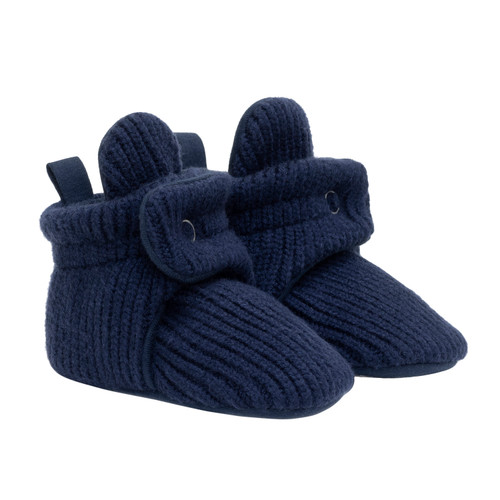
Snap booties from Robeez :
Sizing is roomy to fit different foot sizes. Also provides extra space for feet to grow—perfect for infants & pre-walkers.

First kick from Robeez :
Approved by the American Podiatric Medical Association. The structured silhouette looks, feels, and operates like a shoe—perfect for early and beginner walkers.
Around the age of 2, your child becomes increasingly confident in their movements and walks more proficiently. They then need a comfortable pair of shoes.

Sneakers with strap from Geox :
Easy to pull on and adjust with a practical double hook-and-loop closure. It ensures an exceptionally stable gait and high levels of safety for everyday adventures.
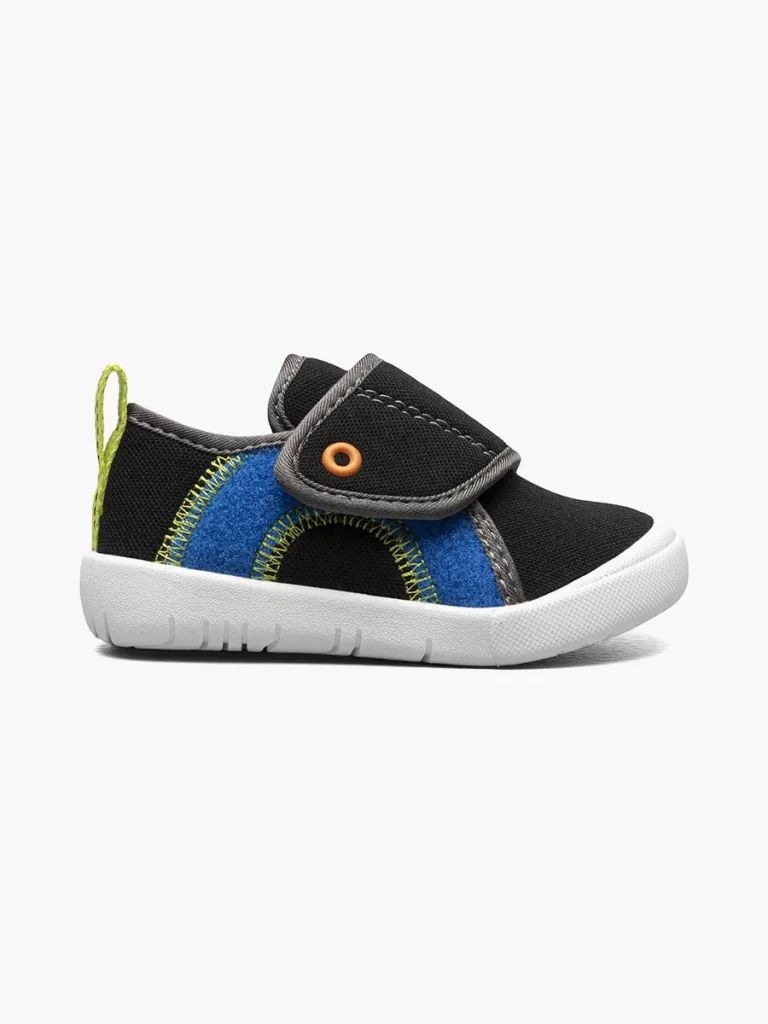
Baby kicker hook and loop from Kickers :
Lightweight construction and flexible outsole promotes healthy foot development
Environmental and Situational Considerations
Environmental and situational considerations play a crucial role in determining when to introduce shoes to your child. Weather and outdoor conditions significantly influence this decision. In warmer climates or during the summer months, parents might opt for lightweight, breathable shoes to protect their child’s feet from hot surfaces or rough terrain. Conversely, in colder climates or during winter, shoes provide insulation and protection from cold temperatures, snow, and ice. Moreover, the type of outdoor activities your child engages in also impacts the timing for introducing shoes. If your child enjoys outdoor adventures like hiking or playing in the park, sturdy shoes with good traction may be necessary to prevent slips and falls. Ultimately, understanding the environmental factors and situational needs helps parents make informed decisions about when to transition their child from barefoot exploration to wearing footwear.
Choosing the First Pair of Shoes
The Importance of Professional Fitting
The importance of professional fitting for children’s shoes cannot be overstated. Children’s feet are continuously growing and developing, and it’s crucial to ensure they wear properly fitting shoes. Measurements and adjustments made by professionals not only ensure comfort but also promote the health of the child’s feet. Ill-fitting shoes can lead to issues such as blisters, corns, or even more serious problems with posture and foot development. By obtaining a correctly fitting pair of shoes from the start, you can contribute to providing proper support and healthy foot growth for your child, thus laying the foundation for good podiatric health in the future.
Essential Features in First Shoes
The essential features of first shoes for children are crucial for proper foot development and facilitating natural movement. Beyond being lightweight to allow for easy mobility, several criteria must be considered. The flexible sole should bend at the toes to encourage the foot’s natural movement, enabling the child to walk and move with ease. Additionally, the shoe must provides adequate space for the foot’s expanding growth. You should be able to fit one finger behind their heel. If you feel the toes “pushing” against the sides of the shoe, it means they lack space. Your toddler therefore needs a wider model. Furthermore, an anti-slip sole, such as rubber, is paramount to prevent slips and ensure stable footing during the child’s movements.
Material and Design Choices
It is recommended to prioritize natural materials such as leather or certain breathable synthetic fabrics, as used in the production of espadrilles, allowing for good ventilation of the foot. However, avoid synthetic materials that may prevent perspiration from escaping, such as faux leather. By opting for breathable materials, you help keep your baby’s feet dry and comfortable. You also reducing the risk of irritation or bacterial growth. Additionally, when it comes to design, look for models with smooth seams and soft interior surfaces to prevent rubbing and irritation.
When you find the proper shoes, don’t forget to properly label them when they go to daycare! Additionally, Colle à moi provides labels specifically designed for shoes, helping children identify their left and right feet more easily.
Beyond the First Pair
Monitoring Growth and Fit
With their feet rapidly growing during early childhood, regular checks and updates to their shoes become necessary. As children develop and become more active, their feet undergo significant changes in size and shape. Ill-fitting shoes not only cause discomfort but can also hinder proper foot development. Therefore, as a parent, you should regularly assess your child’s shoes to ensure they provide adequate support and room for growth. This may involve checking for signs of wear and tear, such as worn-out soles or tightness in certain areas. Additionally, considering the seasonal changes and different activities your child engages in can help determine when it’s time for a new pair of shoes.
Adapting to Changing Needs
Initially, like we said before, soft and flexible shoes are ideal for supporting the development of their feet and muscles as they learn to walk. However, as their confidence grows and they become more active, transitioning to sturdier shoes with additional support may be necessary to protect their feet during outdoor play or sports activities. It’s important to consider the specific needs of each stage of development and the activities your child participates in. For example, shoes with good traction and ankle support may be essential for running. While sandals with adjustable straps are convenient for summertime adventures.
Special Considerations
Special Foot Conditions
During the initial two years, children’s feet may appear flat, which is typical due to their inherent flexibility. As walking proficiency develops, ligaments and muscles strengthen, and the fatty pads in the arch area become less prominent. For flat feet, supportive shoes with arch support can help provide stability and reduce discomfort.
A lot of toddlers exhibit a ‘pigeon-toed’ gait, where one or both feet turn inward while walking (in-toeing). This condition may originate from the foot, lower leg (tibia), or upper leg (femur). In-toeing, may benefit from shoes with a wide toe box to allow natural movement and alignment. On rare occasions, toddlers may walk with their feet pointing outward (out-toeing). In the majority of cases, out-toeing typically corrects itself as posture and balance mature. Additionally, conditions such as high arches or pronation may require customized orthotic inserts or shoes designed to provide extra support and alignment.
It’s important to consult with a healthcare professional or a podiatrist to determine the best footwear options tailored to your child’s specific foot condition.
The Case for and Against Barefoot Walking
Letting your baby walk barefoot offers several benefits:
- It allows them to feel the ground and engage the small muscles in their feet. This helps in developing stability, balance, coordination, and muscle strength. Therefore, wearing shoes indoors is not necessary for a baby learning to walk.
- It exercises their proprioception by letting your baby walk barefoot on various surfaces (e.g., grass, sand, carpet, mattress, bed), enhancing their ability to perceive their body in space.
Of course, your baby still needs shoes to protect their feet, such as when walking outside or in public places. During the peak of summer, your child could go a few additional weeks either barefoot or wearing socks while playing in the garden or at the park. However, when drizzle season arrives or autumn leaves start to squelch underfoot, it may be wise to consider protecting their feet from the elements earlier. Employing a common-sense approach is advisable in such situations. In such cases, their first shoes should be lightweight, flexible, and have cushioned soles.
FAQs on Baby Footwear
How to find the best fit for your child?
If the insole is removable, take it out and have your child stand on it to ensure their toes don’t extend beyond the sole lengthwise, leaving about a 1 cm gap for growth. If the insole is not removable, ensure your child’s heel fits snugly against the back of the shoe and there’s wiggle room for their toes. Have them walk or run in the shoes to confirm comfort. It is important to find the correct fitting shoes!
Can my child wear second-hand shoes?
Do we absolutely need expensive shoes? No! You can find a second-hand shoes, but :
- Ensure they’re in good condition with no obvious signs of wear before allowing your child to wear them.
- Check the soles for excessive wear and tear, ensuring they’re still non-slip and free from uneven wear around the heels.
- Inspect the heels for damage, ensuring any vertical seams are perpendicular to the floor.
- Verify that the insoles are intact, considering replacement if necessary while ensuring the rest of the shoe remains in good shape.
- Confirm that the fastening system (laces or velcro straps) is functional and securely holds the foot in place.
- Thoroughly clean and disinfect the shoes, even if they previously belonged to a family member, to eliminate any potential fungi, bacteria, or viruses.
When should you consult a podiatrist?
Babies have flat feet initially, but their arches develop as they grow. Consult a podiatrist if your child experiences leg pain, frequent stumbling, quick fatigue while walking, or a preference for being carried or using a stroller. Especially if over 3 years old.
Misconceptions Debunked
Solid Soles for Children’s Shoes
The belief that a solid sole provides better support is a myth. Unlike adults, children’s feet are more flexible because their bones are not fully formed. Therefore, children’s shoes should be soft and flexible to encourage natural foot movement. Toddlers should wear soft sole shoes to feel the ground, while active children need shoes with good flexibility and quality rubber soles to prevent slipping.
Buy bigger shoes for kids and they can grow into them.
Purchasing shoes slightly larger for better longevity does not apply in the same way as with clothing. Ill-fitting shoes will not provide the necessary support, risking children’s feet slipping or slipping out of the shoes. Moreover, shoes that are too large can lead to tripping hazards, injuries, and a loss of self-confidence in children.
Conclusion
In conclusion, the journey of introducing shoes to babies involves navigating through various stages of foot development, environmental considerations, and practical footwear choices. Understanding the nuances of when babies might need shoes is crucial for ensuring the healthy growth and mobility of our little ones. From decoding baby foot development to selecting the first pair of shoes and monitoring growth and fit, parents play a vital role in supporting their child’s podiatric health. By prioritizing proper fitting, flexible soles, and breathable materials, parents can contribute to fostering natural foot movement and ensuring comfort and support for their child’s evolving needs. Ultimately, by staying informed and attuned to their child’s development, parents can make informed decisions that promote optimal foot health and overall well-being.
Further Resources
Here some reputable sources for you to seeking more in-depth information on foot care and shoe selection for babies


